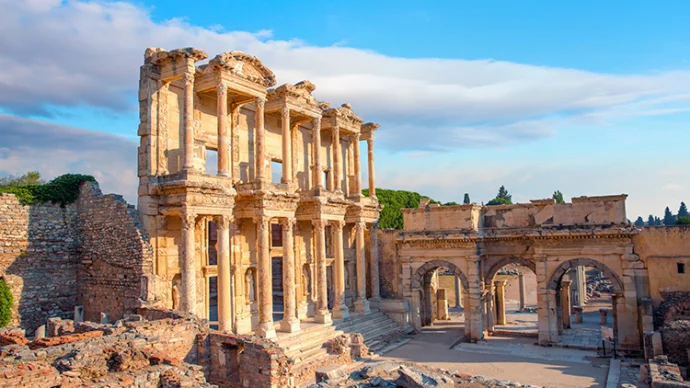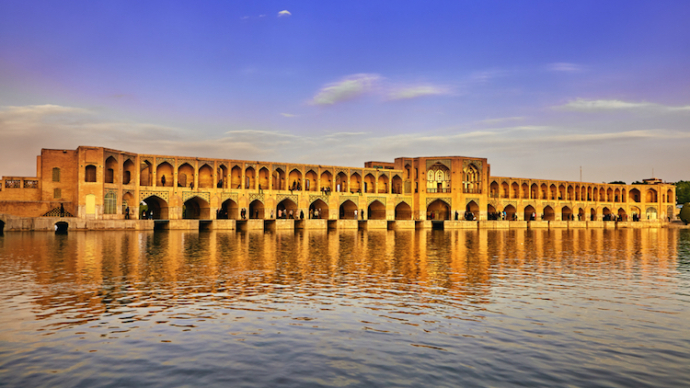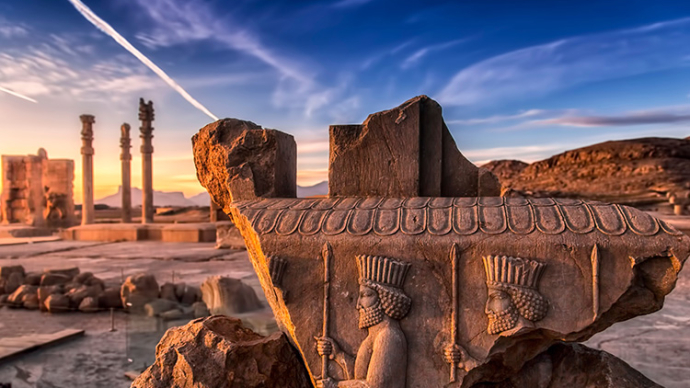
About Persepolis
Persepolis was the ancient capital of the Persian Empire during the Achaemenid era. Founded by Darius I around 515BC, the city stood as a magnificent monument to the vast power of Persian kings.
Today, it is among the world’s greatest archaeological sites, bearing witness to the sophisticated fields of architecture, urban planning, construction technology, and art that characterised the ancient and sophisticated civilisation.
History of Persepolis
The complex of Persepolis is raised high on a walled platform, with five ‘palaces’ or halls of varying size, and grand entrances. The complex was added to by successive kings after its initial construction by Darius the Great in 518 BCE.
It is unclear what the function of Persepolis was; it wasn’t one of the largest cities in Persia, and nor was it occupied year-round. Instead, the grand ceremonial complex was only occupied seasonally, and it is unclear where the king’s private headquarters would have been.
It was, however, the seat of government of the Achaemenid Empire, and a showplace and centre for the receptions and festivals of kings and their empire.
Persepolis remained the centre of Persian power until the fall of the Persian Empire to Alexander the Great.
The Macedonian conqueror captured Persepolis in 330BC, and some months later his troops destroyed much of the city. Famously, the great palace of Xerxes was set alight with the subsequent fire burning vast swathes of the city.
Persepolis does not seem to have recovered from this devastation and the city gradually declined in prestige, never again becoming a major seat of power.
So far, around 30,000 inscriptions have been found from the exploration of Persepolis which offer an insight into its function and the lives of the people who lived and worked there.
Persepolis was declared a UNESCO world heritage site in 1979.
Persepolis Today
Today the imposing remains of Persepolis stand in modern-day Iran on a site also known as Takht-e Jamshid. Located roughly 50 miles northeast of Shiraz, the ruins of Persepolis contain the remains of many ancient buildings and monuments.
These include The Gate of All Nations, Apadana Palace, The Throne Hall, Tachara palace, Hadish palace, The Council Hall, and The Tryplion Hall. All are constructed of dark-grey marble, with fifteen pillars still intact, and three more pillars having been re-erected since 1970.
Getting to Persepolis
From the centre of Shiraz, Persepolis is an hour’s drive via Route 65. For those travelling from further afield, Persepolis is a 9 and a half hour drive from Tehran.
Featured In

Alexander the Great Sites
See where history happened: walk in the shoes of Alexander the Great at these 12 historic sites, from the place of his birth to the battlefields of his military career.

Top UNESCO World Heritage Sites
UNESCO protects over 1,000 Heritage Sites around the world. But which ones are the must-sees? From the Pyramids of Egypt to the Taj Mahal, here are 10 spectacular UNESCO locations that are well worth a visit.

Iran Historic Sites
Explore Iran's rich history, from the days of the Persian Empire through to the 7th-century Arab invasion, at these 10 historic sites, cities and monuments.

Persian Sites
Discover the remarkable legacy of the Persian Empire, from Taxila to Bisotun Archaeological Site and more, in our guide to some of the world's best ancient ruins.



















